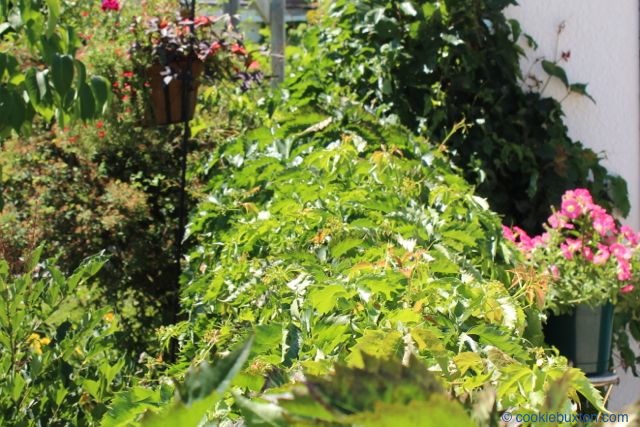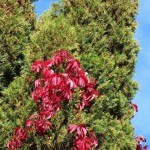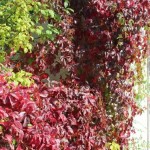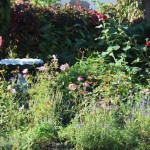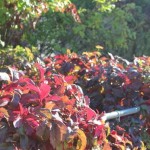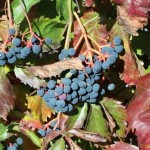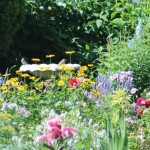Virginia Creeper Makes an Ideal “Living Wall”
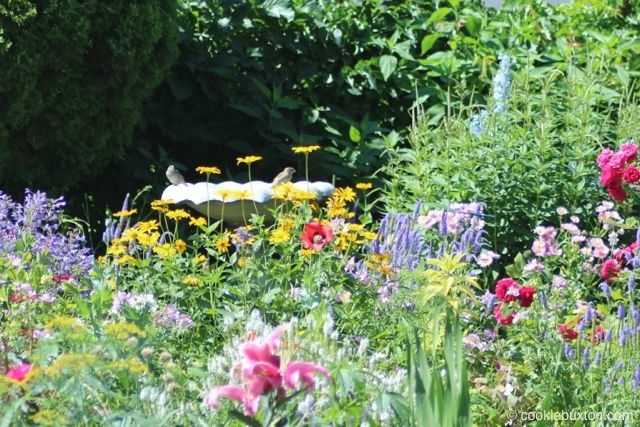
Parthenocissus quinquefolia.
Virgina Creeper.
When I hear the term “living wall,” which interior designers generally use to refer to a wall of plants inside of a building, often with a water feature nearby, I invariably think of an outside wall rather than an interior structure. In fact, the image that comes to mind is the gorgeous Virginia Creeper vine that weaves its way through my chain link fence on three sides of my city yard.
My fence is about ribcage high along the east and west sides, and roughly five-feet high along the south side. In spring, my neighbour and I chat over our shared fence, often holding our pruning shears as we clip the dead vines from the plant. We do this to coax new growth from the heavy old vines, which by now are probably about 30 years old. As spring moves into summer, it is heartening to see the growth of a gorgeous green wall of leaves that provides a stunning backdrop around and between our yards.
Virginia Creeper, though it grows without any difficulty in the zone 3 garden, does require care and a vigilant eye from the gardener to keep it in check. It will climb anything that presents itself, and though its grip is not damaging, at least that’s been my experience, to stucco and other building surfaces, it can strangle other plants. Left unattended, it can easily wind its way around the outside of the host plant. Plants need sunshine and nutrients, and climbing vines can sometimes impair the health of the supporting plant.
If the gardener is willing to keep an eye on the Virginia Creeper vines, and cut them back when they assert themselves too much, then instead of being alarmed by the rapid growth of this vine, the gardener can instead look forward to enjoying a great deal of beauty and also privacy in having this robust climber encircling the yard.
While a chain link fence doesn’t sound the least bit glamorous, or feel like the kind of fence one would intentionally put around a yard, I can’t imagine my yard without it. If I were building anew, a chain link fence would be the first feature I would install around the perimeter of my yard so that I could get my Virginia Creeper planted and starting to climb.
In the summer, I have my very own green living wall around three sides of my yard, providing a beautiful backdrop for the nearby plants. Best of all, the leaves turn an absolutely brilliant shade of red in the autumn months. In September, when the garden begins to rest and plants produce their last blooms before the frost and snow arrive, these stunning vines put on a gorgeous display. It is a wonderful sight to see.
Virgina Creeper produces an abundance of blue berries each fall. The berries, bitter tasting and toxic to humans, should be left unpicked on the vines, as they are an important source of food to birds that over-winter in northern gardens.
According to Wikipedia, Virginia Creeper also goes by the names five-leaved ivy or five-finger ivy. The name quinquefolia means “five-leaved.” Virginia Creeper is a member of the vine family Vitaceae. Its range extends through Mexico and Guatemala, and through eastern and central North America, as far west as Manitoba and south through Texas.
Click on gallery photos to enlarge, and click on right side of photo to advance the images.
Photo ID: 1310_89-95
Photos and text: NK
Copyright: cookiebuxton.com
Photo location: home garden
